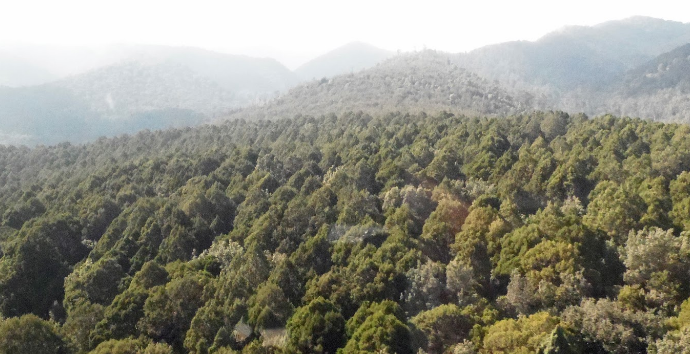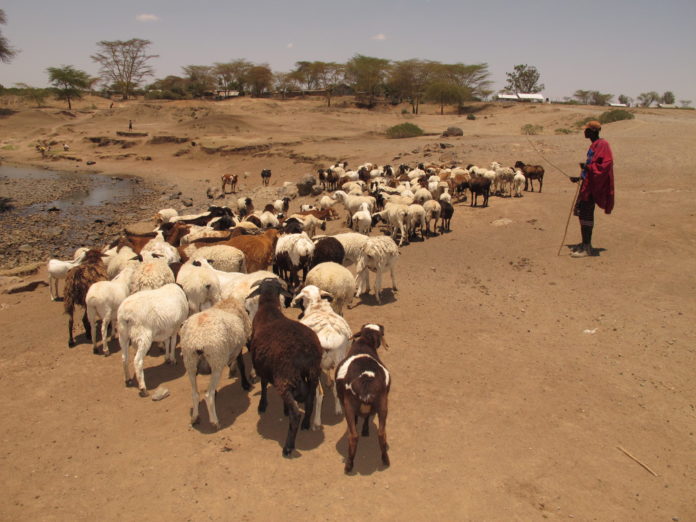By Leopold Obi
Samwel Gachoki casts a pensive look at the azure blue sky, holds his cheeks in deep thoughts , then crosses his hands in a prayer gesture hoping that it rains that evening.
Prolonged droughts have significantly inconvenienced millions of farmers across the country who by now would be preparing for harvesting.
Gachoki, who grows potatoes, onions, maize and vegetables on a five-acre plot at a village near the Aberdare Forest, about 250 kilometers north of Nairobi says they are yet to plant this season following the severe drought which is in its fourth month.
The farmer grows potatoes and onions for commercial purposes while maize and veggies for his household consumption, but now the drought has miffed his source of food and income.

From 90 kilo bag of potatoes, he earns up to 4,000 shillings (40 US dollars) and at time harvest over 30 bags.
The signs of doom for Gachoki began last year in August.
“There was excess rainfall leading to massive flooding and landslide which destroyed maize and potatoes that were about to be harvested.” Recounted the 56-year-old Gachoki who also rears five cross-breed dairy cows.
But mixed farming hasn’t helped the farmer evade the ravaging impacts of climate change.
“Because we live near the Aberdare Forest we experience snow; which falls in very early in morning hours. The snows burn crops and fodder which we have planted for our livestock so even livestock productivity is declining.” Explained the frustrated farmer.
The destruction of the food crops by floods opened the floodgates to food scarcity in the country with more than 4 million people in Kenya currently in need of food aid.
The government bought out at least 10,000 heads of livestock from farmers in drought-stricken regions in Kenya between December and March this year besides providing livestock feeds and supplements to pastoralists in drought-hit areas.
While climate change is affecting food production in rural Kenya-which is the primary food provider for the urban dwellers- it is also contributing to other problems: raising poverty levels among farmers and exodus of young people to towns. Many young people, in particular, see declining opportunities in the countryside.
As the young and energetic youths depart to cities, they leave fewer people behind -mostly the weak and aged to till the land. The biggest challenge brought about by the rural-urban migration is that the old folks left behind are not energetic enough and also lack the skills and know-how required for the modern day agriculture.
Worldwide, 3.4 billion people live in rural areas, often in poverty and with lifestyles that expose them disproportionately to the effects of climate variability such as flooding, drought, frost among others. Many farmers in Africa and Asia cultivate land that’s dry or growing drier and unproductive.
In 2015 in Paris, the international community agreed to keep temperature, “well below 2°C above pre-industrial levels and pursuing efforts to limit the temperature increase to 1.5°C”. This half degree of temperature has greater consequences than one can imagine for ecosystems, economy, and life on the planet in general.
Scientists point out that extreme weather conditions such as El Niño and El Nina will be more frequent and even far much adverse compared to the past and call for quick intervention to be put in place.
According to UNDP report titled Pursuing the 1.5°c limit benefits & opportunities limiting global warming to 1.5°C will bring increased safety for people and the environment, and an improved economic outlook of at least 10 percent higher levels of global GDP by 2050.
While farmers face challenges in adapting and responding climate change impact which is currently eroding agricultural productivity, resources being channeled into agriculture still remains modest as well.
A report released in 2014 by the Climate Policy Initiative found out that just 2 percent of the 331 billion US dollars in global climate financing as of that date was going toward improving farming practices.
The scientists and experts caution that changing climatic pattern will negatively affect crop farming, livestock keeping and aquaculture in the future if timely interventions are not put in place.
Francis Onyango, a climate change consultant of the World Bank says, the government must encourage environment conservation as well as the use of renewable energy to mitigate climate change effects.
“The world has become warmer which is destabilizing many systems, therefore, will have adverse consequences for our biodiversity, water, forests, livelihood and economy,” Onyango said.

Principal Secretary in the state department of fisheries and blue economy, Prof. Micheni Ntiba points out that global warming has led to the collapse of cold water fishing in Mt Kenya, Mt Elgon regions where streams are slowly drying out and cold water fish such as trout are also disappearing slowly Basically, climate change is about trends and global temperature is a key indicator of how warm the Earth is becoming. Essentially El Niño has made way for his sister La Niña.
“Global warming is affecting water temperatures resulting in changes in the aquatic environment.” Prof Ntiba said, adding that flooding also resulted into emergence of livestock diseases such as Rift Valley Fever and foot rot.
Prof Ntiba also points out that that El Niño led to post harvest losses in 19 counties in Kenya.
“We are now planning to restock fish population in major water bodies across the country, come up with appropriate storage facilities to minimize post-harvest losses besides rolling out livestock vaccination program in affected areas.” he said at the Kenya strengthening decentralizing climate change risk preparedness workshop in Nairobi.














